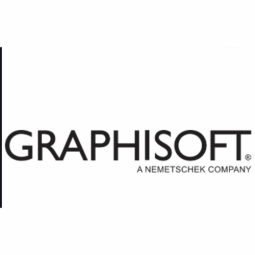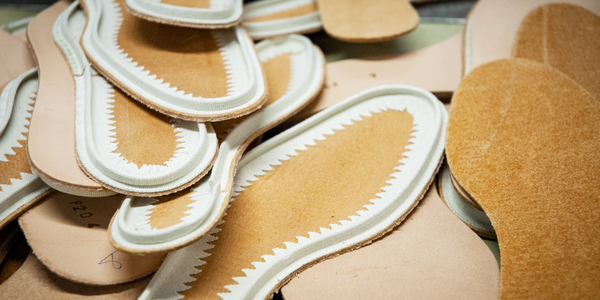Technology Category
- Sensors - Autonomous Driving Sensors
- Sensors - Optical Sensors
Applicable Industries
- Apparel
- Glass
Applicable Functions
- Product Research & Development
- Quality Assurance
Use Cases
- Smart Lighting
- Visual Quality Detection
Services
- Testing & Certification
About The Customer
The customer in this case study is an architect who has been using Archicad since its eighth version in 2003. The architect has been encouraging others to design all components in the BIM environment provided by Archicad. With the introduction of the CineRender integrated visualization engine in version 18, the architect has been exploring the various effects and options it offers to enhance the quality of architectural renderings. The architect has been using the software to apply unconventional approaches and unlock new opportunities that many users may not be aware of.
The Challenge
Archicad, a software by Graphisoft, has been a popular tool among architects for over 30 years. However, many users are not fully aware of its capabilities, particularly the CineRender integrated visualization engine incorporated since version 18. This engine allows the entire project design cycle to be accomplished within one software program. Despite not aiming for 100% photo-realistic rendering, the engine offers a range of effects and options that can significantly enhance the quality of architectural renderings. The challenge lies in unlocking these less-studied functions and new opportunities to create stunning renderings.
The Solution
The CineRender engine in Archicad offers a variety of effects and options that can be used to create high-quality architectural renderings. The White Model option, for instance, allows users to quickly obtain a picture that renders the general design volume and proportions. The Color Correction option can be used to change the image contrast and depth, while the Shader Casting function can create a vignette. The Distance Fog option can create fog, and the Sharpen Filter feature in the Lens and Filters tab can enhance the image quality. The Lens Flare option can activate flares included in the Light Sources parameters. Additionally, the Depth of Field parameter allows certain objects to stay in focus, while the objects in the foreground and background appear blurred. The physical rendering simulates real photo camera behavior, and different weather settings can produce interesting results with the Physical Sky enabled. The surface parameter settings can be adjusted to create different materials in terms of their visual perception.
Operational Impact
Quantitative Benefit

Case Study missing?
Start adding your own!
Register with your work email and create a new case study profile for your business.
Related Case Studies.

Case Study
Fire Alarm System and Remote Monitoring Sytem
Fire alarm systems are essential in providing an early warning in the event of fire. They help to save lives and protect property whilst also fulfilling the needs of insurance companies and government departments.Fire alarm systems typically consist of several inter-linked components, such as smoke detectors, heat detector, carbon monoxide, manual call points, sounders, alarm and buzzer. The fire alarm system should give immediate information in order to prevent the fire spread and protect live and property.To get maximum protection a shoe manufacturer in Indonesia opted for a new fire alarm system to monitor 13 production sites spread over 160 hectars. Although the company had an existing fire alarm system, it could not be monitored remotely.It was essential that the new system would be able to be monitored from a central control room. It needed to be able to connect to the existing smoke detector and manual call point. Information should be easily collected and passed on to the Supervisory Control and Data Acquisition (SCADA) system. Furthermore, the system should have several features such as alarm management, auto reporting, being connected to many client computers without additional cost, and run 24/7 without fails. The company also needed a system which could be implemented without changing the architecture of the existing fire alarm system.

Case Study
IoT Applications and Upgrades in Textile Plant
At any given time, the textile company’s manufacturing facility has up to 2,000 textile carts in use. These carts are pushed from room to room, carrying materials or semi-finished products. Previously, a paper with a hand-written description was attached to each cart. This traditional method of processing made product tracking extremely difficult. Additionally, making sure that every cart of materials or semi-finished products went to its correct processing work station was also a problem. Therefore, the company desired an intelligent solution for tracking assets at their factories. They also wanted a solution that would help them collect process data so they could improve their manufacturing efficiency.

Case Study
Retailer Uses RFID Scanner to Improve Efficiency
Patrizia Pepe wished to improve the logistics of their warehouse: accepting incoming goods from their production sites, movement of items throughout
the warehouse, and packaging of goods for distribution to the retail locations. They initially tried to use barcodes for this function. Because barcodes must be individually scanned within a line-of-sight, the acceptance of goods coming into the warehouse was too time consuming. Working with the University of Florence, Patrizia Pepe instituted a five-month pilot project beginning in August of 2009 to test the validity of an RFID solution. The pilot involved tagging of about 60,000 items for the second seasonal collection, and convinced the company to move forward with tagging all items.

Case Study
Monitoring and Controlling Automatic Mixing and Dispensing Machines
As technology advances, textile manufacturing has been transformed from a labor-intensive to a partially or fully automated industry. Automation is significant in all segments of textile production - from spinning to printing, and textile machinery manufacturers are constantly searching for new technologies and automation processes will increase the productivity of their machines. The color paste mixing and dispensing machine is an essential part of the printing and dyeing process. With the advantage of automatically computerized controls and database management, the system can significantly improve its dispensing precision, working efficiency and production quality as well as reducing material consumption.









